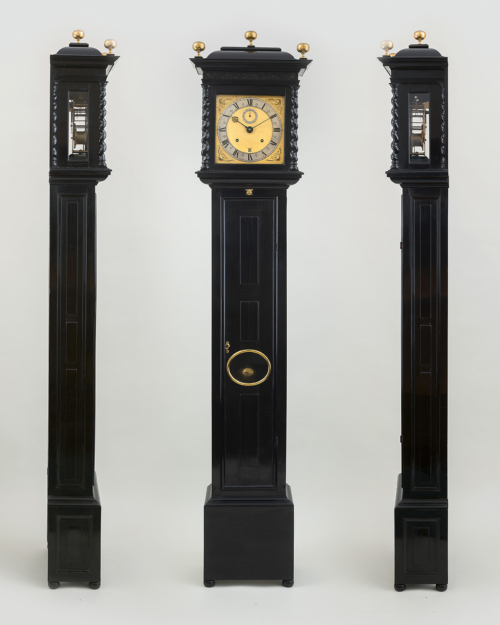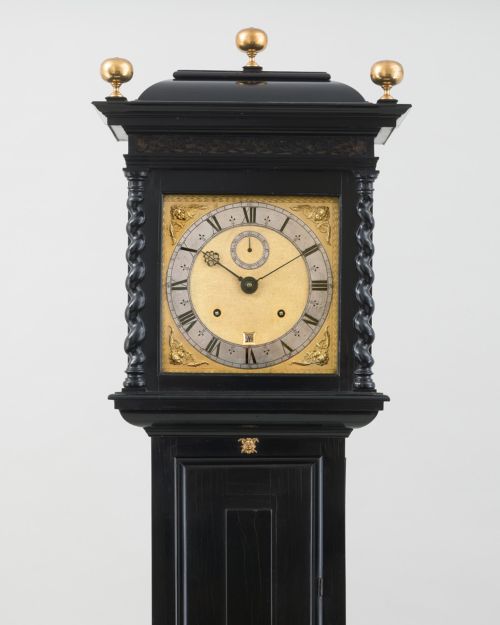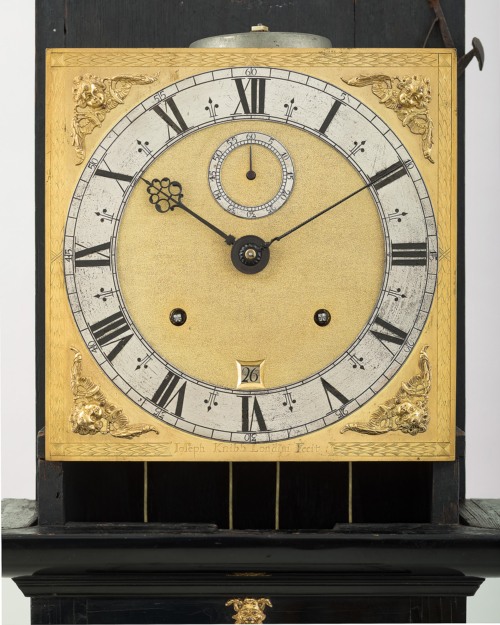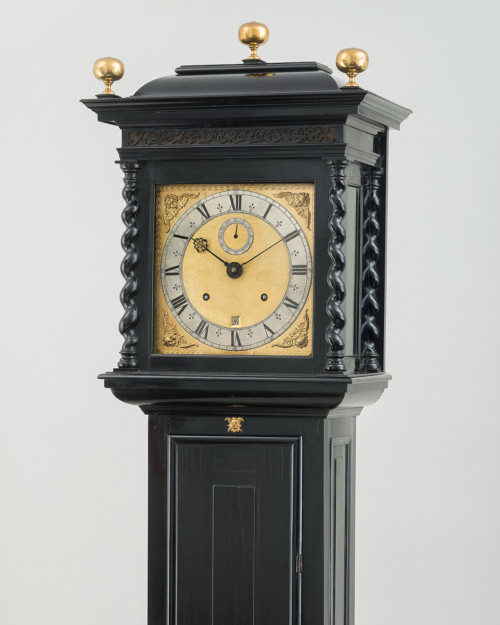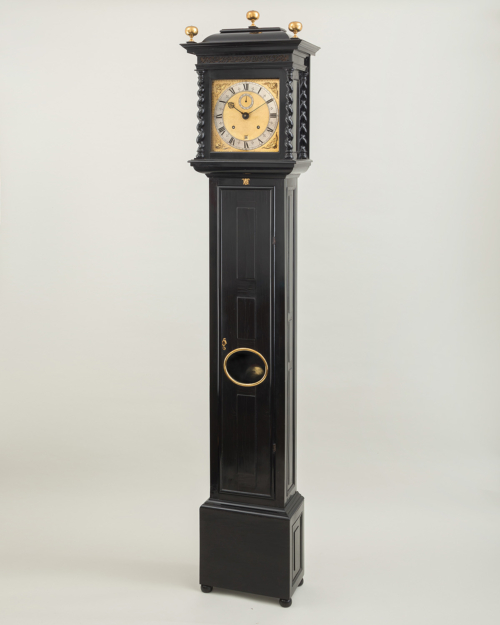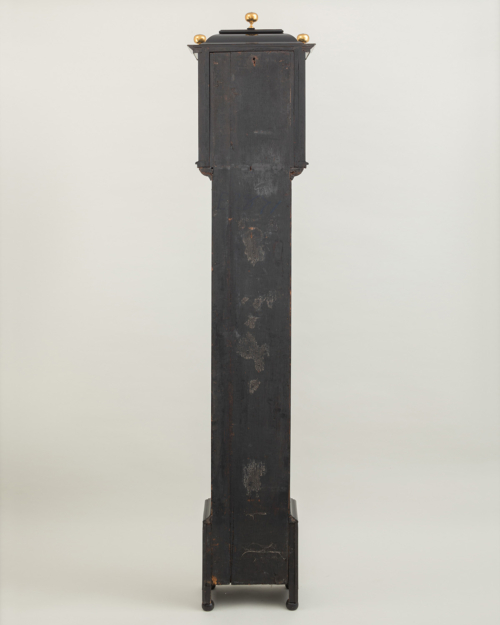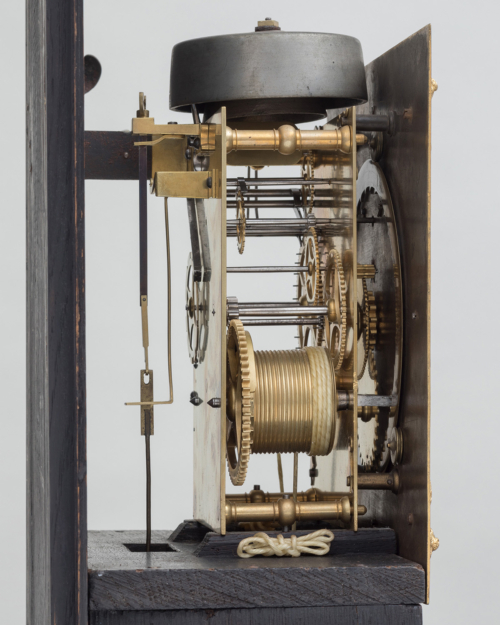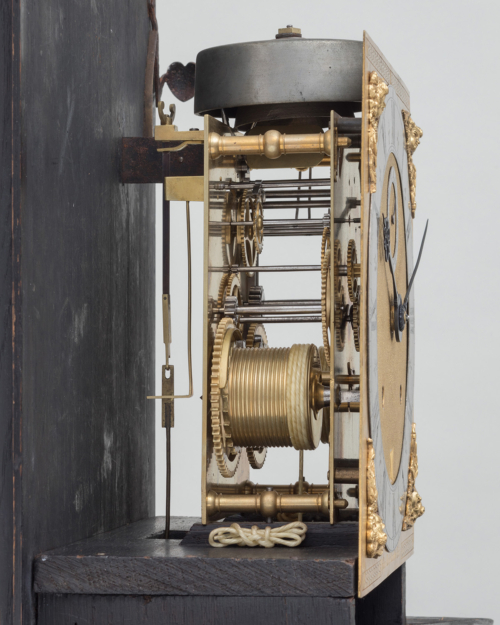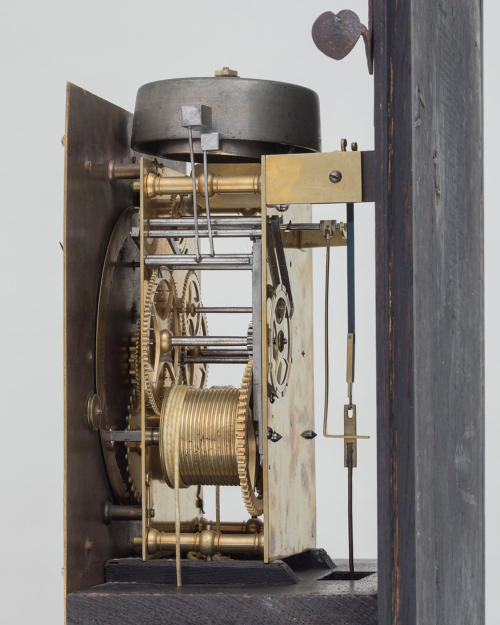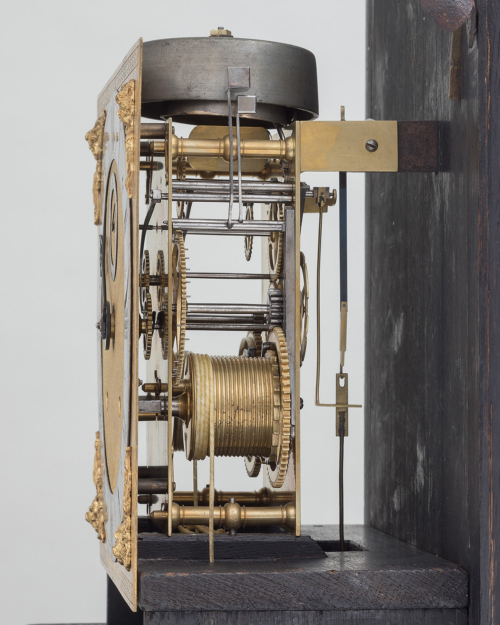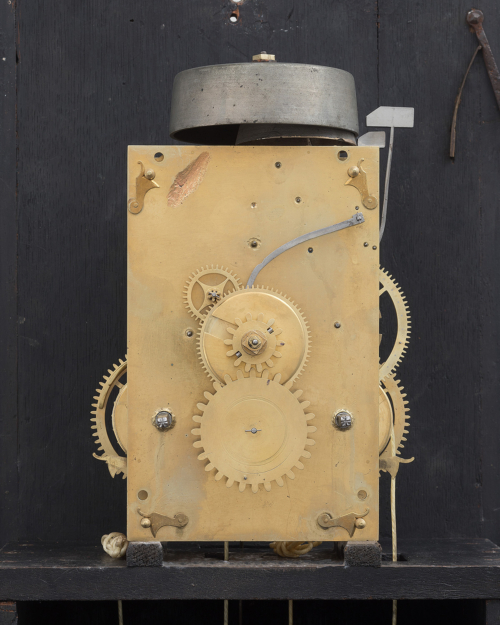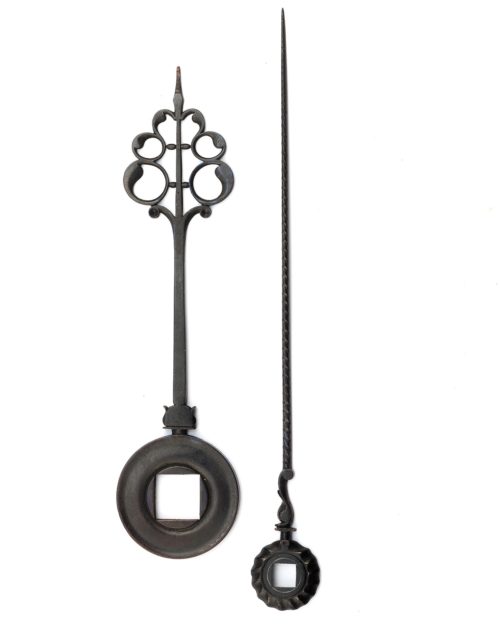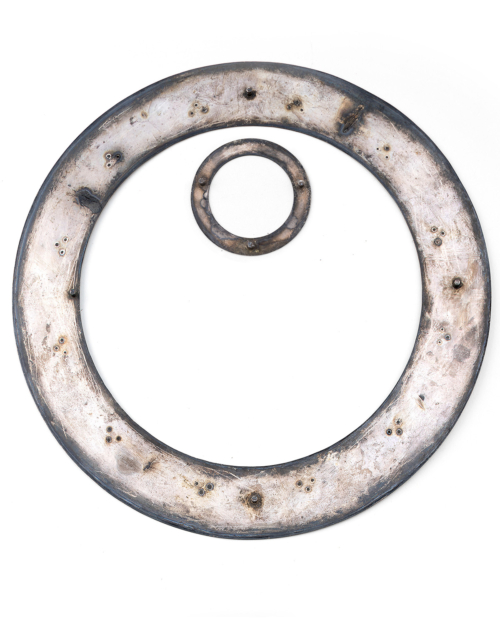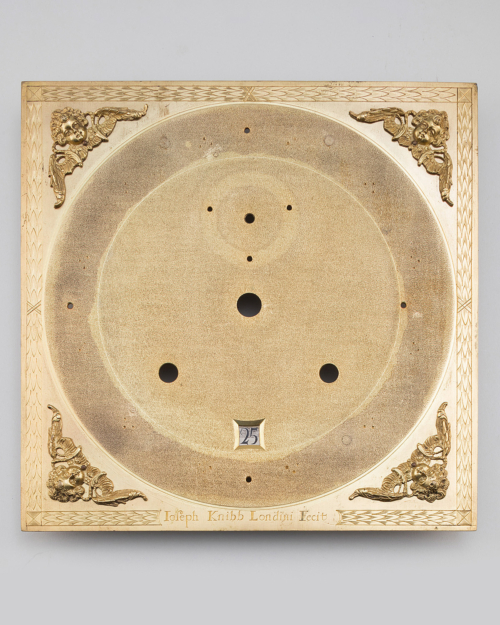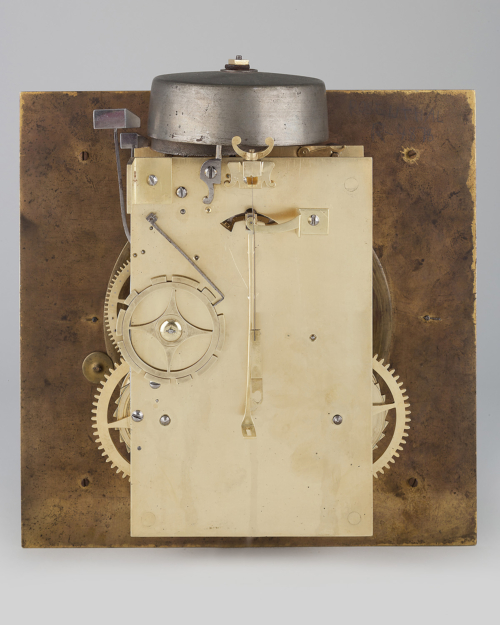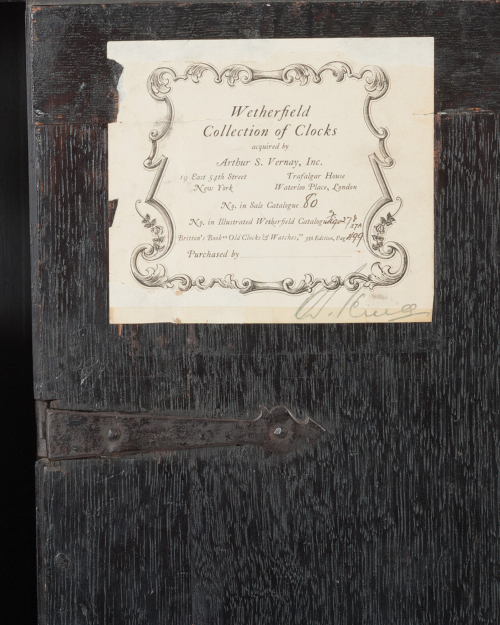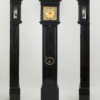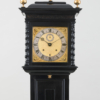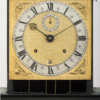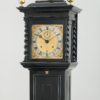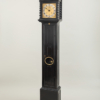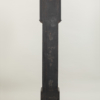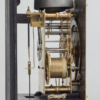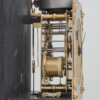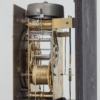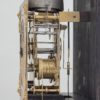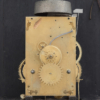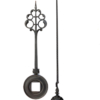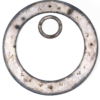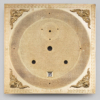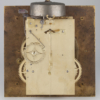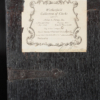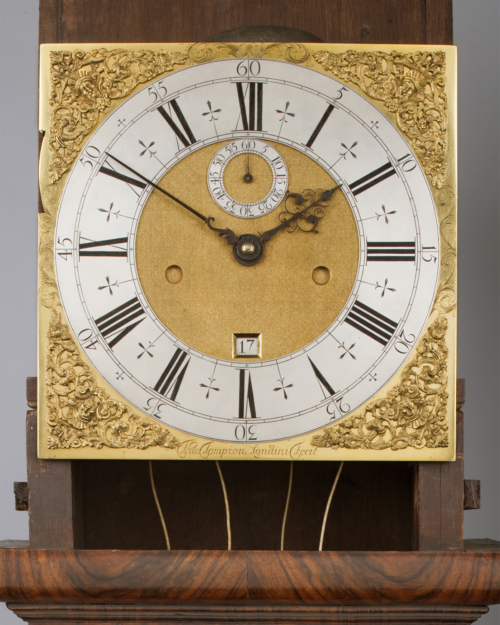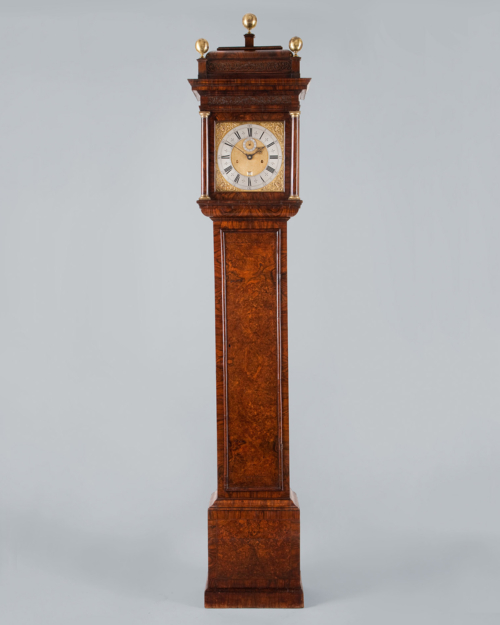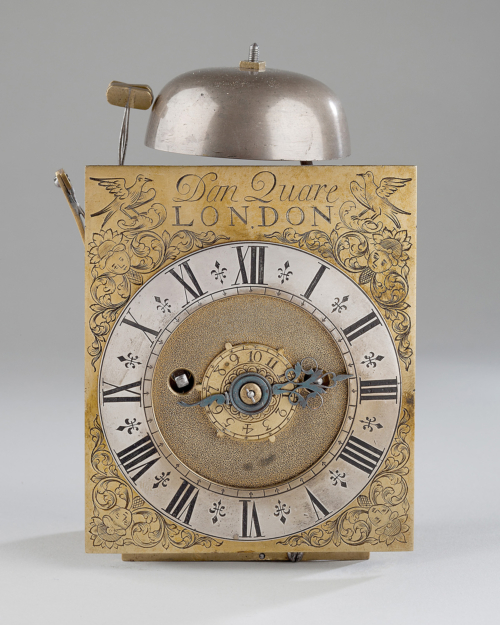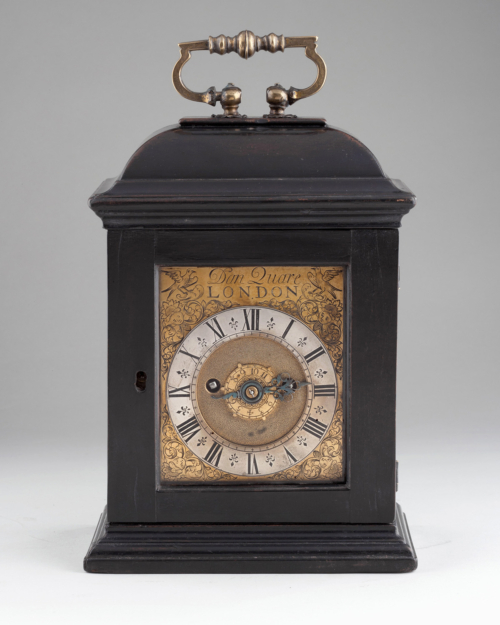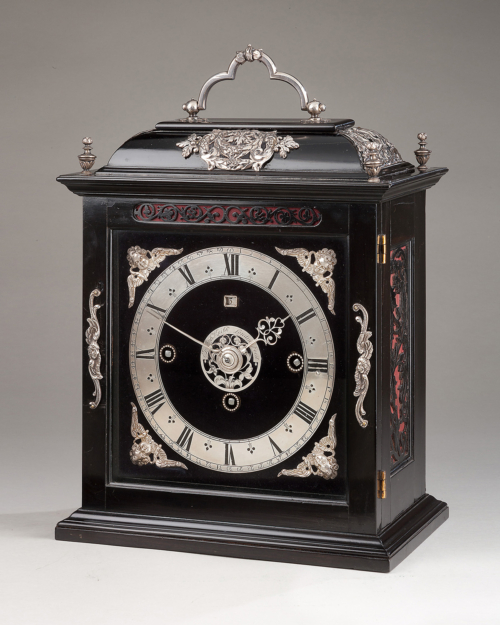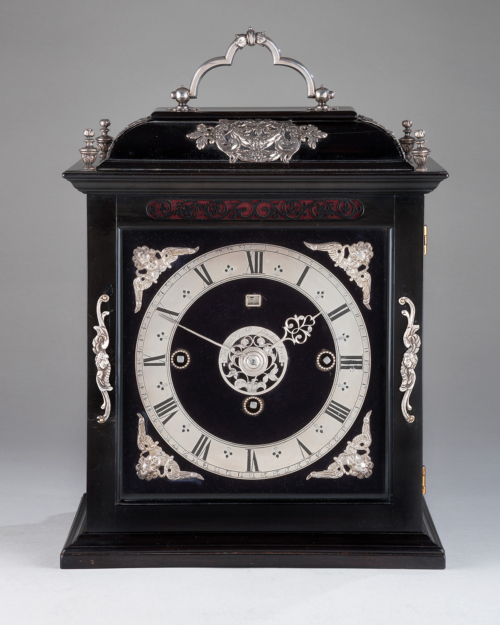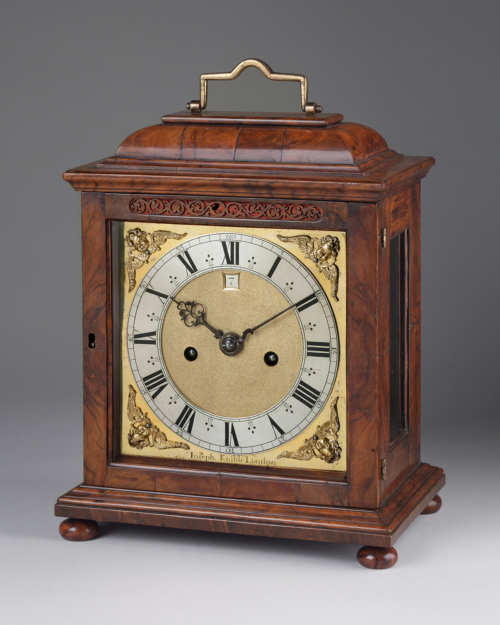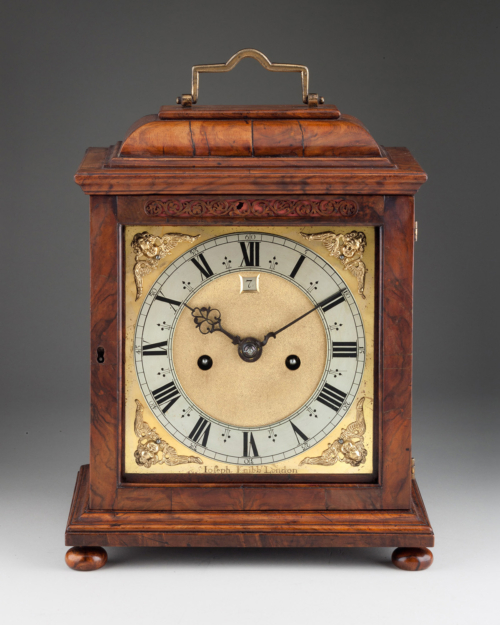| Stock No. | Exhibit No.11 |
| Height | 6 foot 9 inches |
| Case | The case, veneered in ebony onto an oak carcass, has a rising hood with a re-instated caddy top and three brass ball finials, above pierced ebony frets to the frieze, supported by Solomonic three-quarter columns to the front and matching quarter columns to the rear. The panelled trunk has an original gilt-brass satyr-mask above the panelled door which is set with a brass-framed oval lenticle and has a printed paper label pasted to inside for Wetherfield Collection of Clocks, acquired by Arthur S. Vernay Inc., No. in the Sale Catalogue 80. The part-restored plinth is panelled to the sides and raised on later ebony bun feet. |
| Dial | The 10 inch gilt-brass dial has four latched dial feet, and is signed to the lower edge Joseph Knibb Londini Fecit flanked by a wheatear engraved border with winged-cherub corner spandrels. The narrow solid-silver chapter ring has Roman hours (the use of IV, indicating Roman strike) with trident half-hour markers and Arabic five-minute numerals within the division ring. The very finely matted centre has a solid-silver seconds ring and a calendar aperture just beneath chapter XII. The very fine blued-steel hands are beautifully pierced and chamfered. |
| Movement | The delicate two-train movement has five latched finned baluster pillars, with the two five-wheel trains reverse-wound for month duration; the going train has anchor escapement together with the original butterfly nut brass-rod pendulum with coarse-regulation lenticular bob, which is suspended from the movement on a steel spring and brass hook with a further butterfly nut for fine-regulation. The strike train has outside countwheel Roman-notation strike, via internal pump-and-lever hammers, up to the larger ‘pork pie’ bell (for chapters with V & X struck once and twice respectively) and the smaller hemi-spherical bell (for chapters with I struck individually). The movement is supported on the original seatboard with screws through the base pillars. |
| Provenance | The Wetherfield Collection, until dispersed in 1928; With Arthur S Vernay, New York; Purchased 31 July 1974 from Stair & Company, New York; The Guggenheim Collection, until sold, Christie’s, New York, Private collection UK. |
| Literature | Britten, Old English Clocks; The Wetherfield Collection, 1st edition, 1907, p.25; Britten, Old Clocks & Watches, Xth Edition, Figs. 27 and 27A; Britten, The Wetherfield Collection of 222 Clocks sold by WE Hurcomb on 1st May 1928, facsimile of the Sale Catalogue, 1980, no.80; Bruton, The Wetherfield Collection of Clocks, 1981, p.124-125, no. 72. |
| Dimensions | Height 6ft 9 inches; width 17 inches; depth 10 inches |
| Notes | The politician Sir Richard Legh of Lyme Hall (1635–87) wrote to his wife in 1675, describing Knibb’s advice on choosing a case for his longcase clock: ‘I went to the famous Pendulum maker Knibb, and have agreed for one, he having none ready but a dull stager which was at £19; for £5 more I have agreed for one finer than my Father’s… I wold have had itt olive wood, (the Case I mean), but gold does not agree with that colour, soe took their advice to have it black ebony which suits your Cabinett better than walnut tree wood of which they are mostly made. Lett me have thy advice by the next.’ Legh’s wife, Elizabeth, replied: ‘My dearest Soule, as for the Pandolome Case I think Blacke suits anything.’ To date, there are only five surviving ebony cased, month-going and Roman striking, longcase clocks by Joseph Knibb recorded, and only two of these have chapter and seconds rings of solid-silver, including this example. This ebony Roman striking longcase clock was one of two similar examples owned by the celebrated collector, David Arthur Wetherfield. During the late 19th and early 20th centuries, Wetherfield assembled one the greatest collections of English domestic clocks ever put together by a private collector, which assisted academics and enthusiasts considerably with early 20th century horological research. By his death in 1930, the collection had grown to well over 200 examples and the collection was sold; about half the clocks went to America (despite his wishes to the contrary), but the remainder stayed in Great Britain. |
- Sorry, this product cannot be purchased.
The Wetherfield Knibb, circa 1680
A very rare Charles II silver-mounted month-going ebony-veneered Roman striking longcase clock by Joseph Knibb, London.
£195,000
Additional information
| Dimensions | 5827373 cm |
|---|

